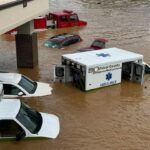
In case of an emergency or disaster, having a Bug Out Bag (BOB) can be the difference between life and death. A well-prepared BOB should contain all the essential items you need to survive for at least 72 hours if you need to quickly leave your home or evacuate. In this article, we will cover what a Bug Out Bag is, what items to include, and some tips to keep in mind when preparing and keeping a BOB.
What is a Bug Out Bag?
A Bug Out Bag is a portable kit that contains essential items to help you survive for at least 72 hours in case of an emergency or disaster that requires you to quickly leave your home or evacuate. A BOB should be easily accessible, lightweight, and contain everything you need to survive, including food, water, shelter, clothing, and other necessary items.
What should go into a Bug Out Bag?
When preparing a BOB, there are several items you should consider including:
- Water and water purification methods: It’s essential to have at least one liter of water per day per person, and you should consider including water purification tablets or a filtration system to ensure you have access to safe drinking water. Be sure to include a Life Straw or something like it. If you are in an urban environment, consider carrying a silcock key which would allow you to access water from a commercial building’s exterior hose connection. I would also include a reusable hard plastic bottle that you can keep filled, but also refill once it is depleted.
- Food: Non-perishable, high-energy foods such as protein bars, canned goods, and dried fruits and nuts should be included. Consider packing a small pot and camping stove or portable grill if space allows. Canned food will be heavy to carry, but it does last a long time. Get the cans with the pull tab top.
- Shelter: A tent or tarp, sleeping bag, and waterproof matches should be included to provide shelter and warmth. You should also pack enough cordage to tie down or tie up your tarp and tent.
- Clothing and personal hygiene: Include clothing appropriate for the weather, sturdy shoes, and personal hygiene items like toilet paper, hand sanitizer, soap, toothbrush, and toothpaste.
- First aid kit: A first aid kit with items like bandages, antiseptic wipes, and pain relievers should be included. If the emergency is bad enough to flee the house, you might want to make this kit a bit more comprehensive and maybe even include a tourniquet.
- Tools: Multi-purpose tools like a knife, axe, and saw, lighters, as well as a flashlight, batteries, headlamp, and a radio, should be included.
- Important documents: Copies of important documents such as passports, driver’s licenses, and insurance policies should be included in a waterproof container. Consider laminating a card with important phone numbers.
- Money: Include $200 in cash with no bills larger than a 20. A store’s computing system may be down, but the owner might allow you to make a purchase with cash. You might even be able to rent a room for the night with cash. A few dollars in quarters could come in handy too.
What are some things to keep in mind about preparing and keeping a Bug Out Bag?
- Keep your BOB in an easily accessible location, such as by your front door or in your car.
- Regularly check and update your BOB to ensure that all items are in good working condition, and the food and water are not expired. Update your packed clothing for the season.
- Customize your BOB to fit your specific needs and circumstances. For example, if you have pets or children, consider including items for them.
- Consider packing your BOB in a waterproof and durable backpack or duffel bag to protect the contents.
- Keep it lightweight: Your bug out bag should be lightweight enough to carry for extended periods. Keep it under 25% of your body weight.
- Practice using your BOB by conducting drills and making sure everyone in your household knows where it is and how to use it.
In conclusion, a Bug Out Bag is an essential item for emergency preparedness. It should contain all the necessary items for survival, including water, food, shelter, clothing, and tools. Keeping your BOB in an easily accessible location and regularly updating and customizing it are essential to ensure you are prepared for any emergency or disaster.
It is our mission to educate, equip, and empower everyday ordinary civilians to understand, prepare for, and survive any emergency they face. We cannot rely on the government to take care of us. We must take it upon ourselves to provide for and protect ourselves and our families.






